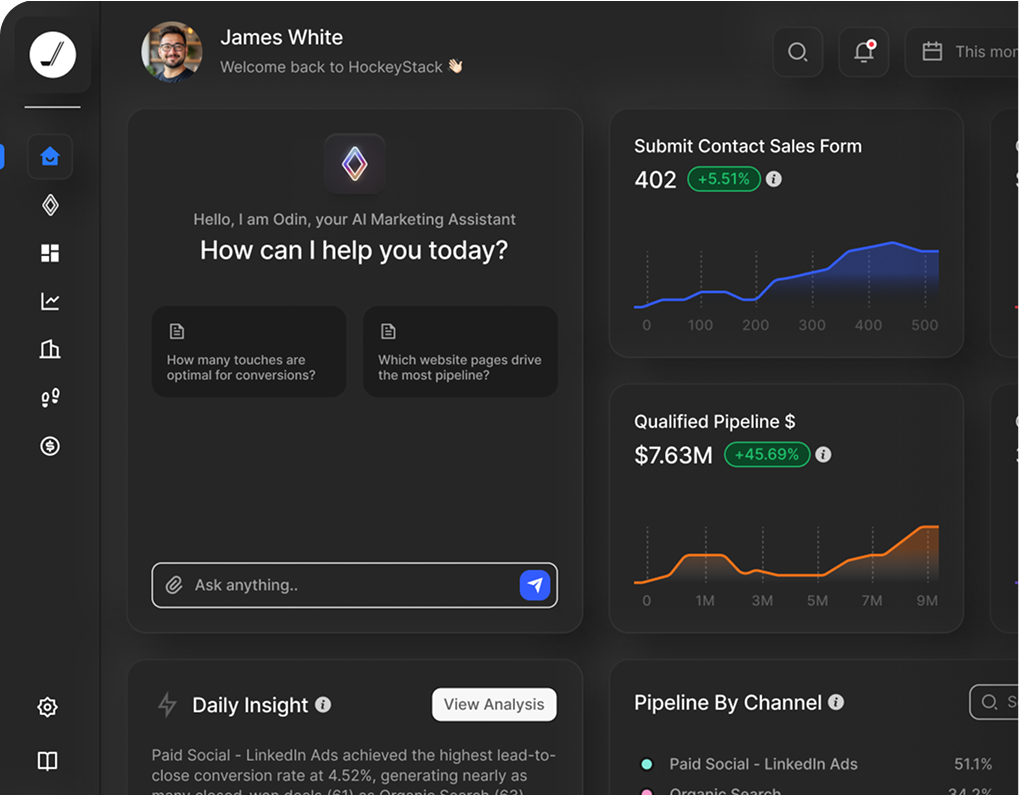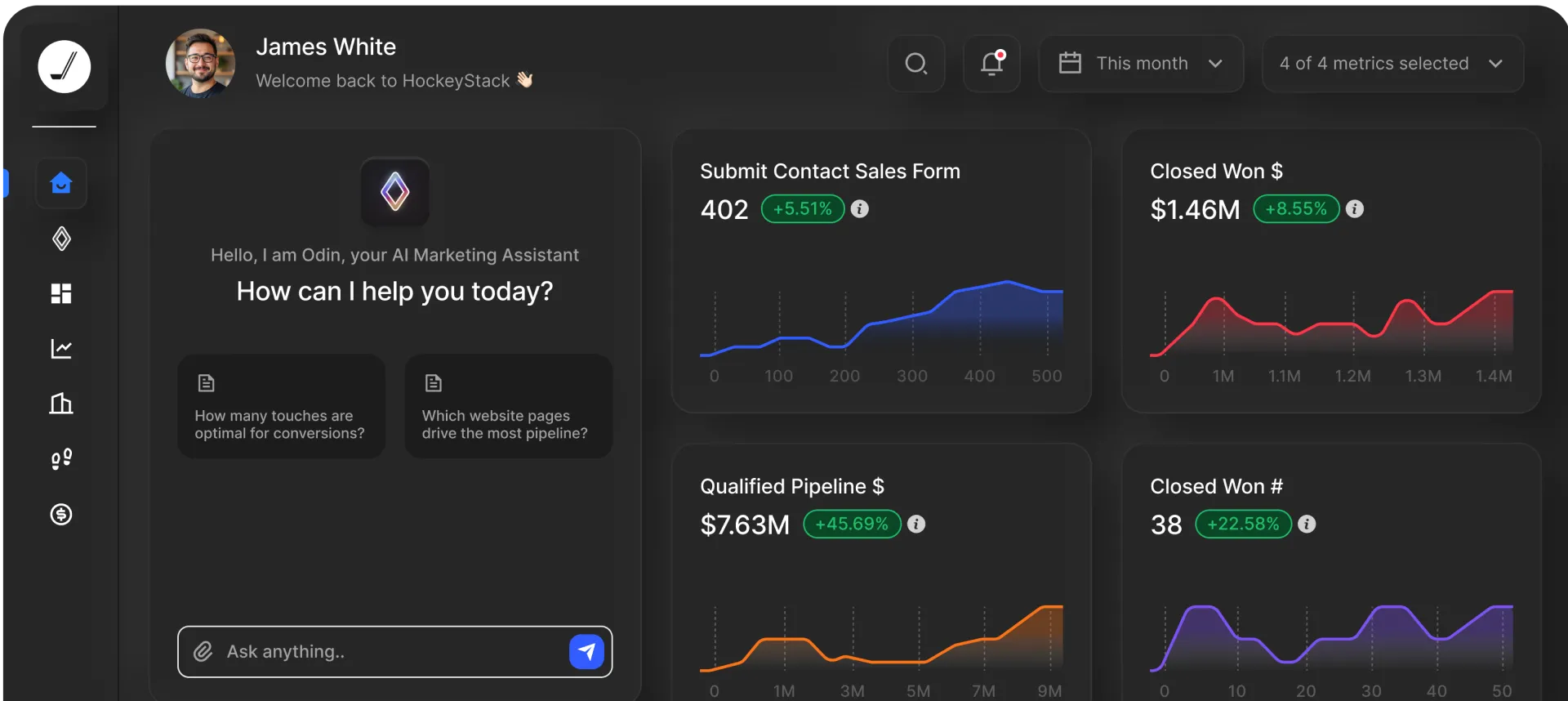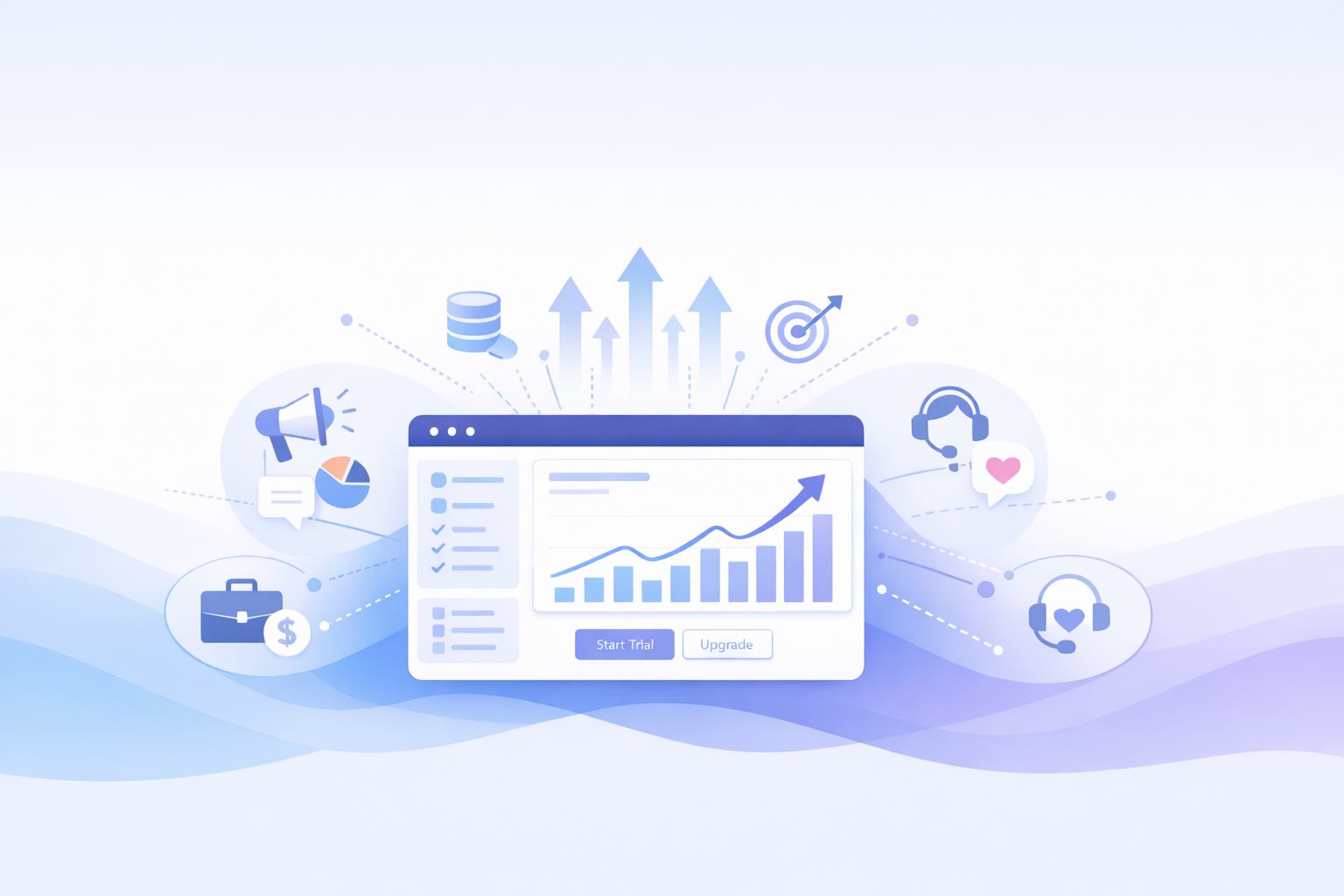How to Manage a Sales Pipeline: 6 Tips for SaaS Companies

How to Manage a Sales Pipeline: 6 Tips for SaaS Companies

“Maintaining a well-structured sales process can give you an 18% difference in revenue growth”
–Harvard Business Review Study
Now that I have your attention, there’s something important you need to know – you need to pay attention to your sales pipeline!
If your SaaS company is dealing with B2B sales, then you already have a sales pipeline in place, but is it working the way you want it to? If not, it’s time that you start looking into your sales pipeline as it serves as the basis for everything from your revenue growth to your customer relationships.
So how do you manage a sales pipeline?
Well you can begin by focusing on the quality of leads and the customer journey that leads to conversion. But while you’re at it, also focus on recognizing the leads’ intent and customer retention.
Let’s begin and dive deeper into the what, why, and how of managing a sales pipeline.
Why is managing the sales pipeline important for SaaS companies?

Did you know that 44% of companies have poorly managed sales pipelines which means there’s disaster up ahead. Let’s begin by understanding why sales pipeline management is so important for SaaS companies.
SaaS companies generally operate on one of three models. The model you choose can have an impact on the way you target your leads. For instance, a SaaS company that generally has long-term customers will target their leads in a different way than a company that just has one-time customers.
These models define how revenue will be recorded and an efficient sales pipeline can make all the difference in helping leads close faster.
Subscription-based model - Revenue is calculated on the basis of weekly, monthly, or yearly subscriptions of your services. Beneficial for both customers and company
Pay-as-you-go model - Users pay as per consumptionIt is beneficial for customers who cannot afford long-term services.
One-time use model - Users make one payment for the complete package and then decide if it works for them. It’s risky for SaaS companies since there are no guarantees of recurring revenue.
A well-maintained sales pipeline can help you with:
- Sales forecast improvement
- Increased pipeline velocity
- Better reporting
That’s enough about the importance of appropriately managing a sales pipeline. Let’s move on to the main part of the article.
6 tips on how to manage a sales pipeline better

Now that you know why managing a sales pipeline is important, let’s get to the real deal – how to manage a sales pipeline. Pipeline management is not a straightforward, easy task. It needs precision, focus, and a lot of attention. To make it easier, we’ve gathered six of the top tips for you to follow and make managing a sales pipeline easier:
Prioritize high value leads
Whatever marketing strategy you’re using, be it ABM or traditional lead generation, there’s one thing that should be the top priority: your leads.
To manage your sales pipeline better, start off by identifying high-value leads. These could either be the ones who are very likely to convert, will pay a significant amount for your service, or will turn into long-term customers. You can significantly improve your conversion rates by using data analysis tools to enhance your understanding and communication.
Furthermore, you should know that simply focusing on high value leads is not the only thing you need to look out for. Management of a sales pipeline also improves when you understand your dead leads and let them go.
Remember: Not every lead can convert into long lasting customers.
You know how we’re always told to learn how to let go? Well, the same rule applies here. Just like a toxic relationship leading to a dead-end, your leads can be the same for your company. Except here, you’ll be facing some serious monetary setback.
It can take weeks or even months to build and nurture a relationship with leads before they close. If the data is not in your favor, don’t be afraid to let them go.
Don’t forget to follow up
Your company sales pipeline and leads are very similar to your personal relationships. You need to give them attention, time, and understanding to build a bond. If you let the lead go and expect them to approach you themselves for a service, you couldn’t be more wrong.
When you see that a lead is high-value, you market them with services that you know would be of interest to them. Follow up on their thought process. Keep in mind, you’re not the only option your leads have. There are plenty of B2B SaaS platforms which offer similar services as you. This means that you need to keep in touch with clients to show them your worth.
Keep an eye on pipeline metrics
Your pipeline metrics like the number of SQLs, average sales cycle length, and customer acquisition cost, etc will tell you how well you’re performing. Always keep one eye open for these metrics so that you know when you need to make changes to your pipeline strategy.
You can use an analytics tool like HockeyStack to consolidate data and review it constantly. These tools gather information from your required metrics and allow you to review it all in one place to make the right deductions and gain insights.
This is how a dashboard with consolidated data can look like:

As seen in the example above, data on everything from the churn rate to the number of active users is available all on a single dashboard. This will help you understand how your pipeline is performing and if your numbers are at par with your expectations.
Constantly look out for roadblocks
How to manage a sales pipeline when you have roadblocks is a good question to ask. But first, what do I mean by roadblocks?
Well, your sales pipeline may have some internal and external inefficiencies. Maybe your sales team is pushing for a sale instead of understanding the goal. Alternatively, there may be a miscommunication between the teams, or your sales representative is probably not prospecting the way that they should.
Once again, if you don’t have access to the data, how will you know what’s causing the delay in the sale? First, gather all the sales-related data you can to see where the issues lies. An example is shown below:

Now, you’ll have a better idea about the monthly meetings and revenue generated. Depending on your forecasted amount, you can decide whether the numbers are up to the mark. Further detailing it, you can create a graph showing the average meetings per week. For example:

You can also take a look at the sales funnel to identify the point at which the most leads are dropping off. HockeyStack’s funnel below shows how the conversion rate changes at each stage and how many leads proceed to the next stage in the funnel.

A funnel like this can also be extremely effective in A/B testing. For instance, you could change the design of your Sign-Up page and evaluate how this affects conversions.
Keep your sales cycle short
So, did you look at how much time it’s taking for conversions to show? Let’s say your sales is converting twenty leads into paying customers. However, the time taken for most of those leads to close is about two months. Your sales cycle turns out to be two months which is…not so great.
Well, you won’t know until you have all the data on activities carried out in the pipeline. All the metrics involved will show you how you can reduce the sale cycle and increase the chances of a successful sale.
If you have a longer sales cycle then there are more chances that other companies will approach your lead with better offers. Furthermore, it would also increase the chances of more people being involved in closing the deal. You know what that means?
You’ll have a lot more people to convince than just your lead!
Consolidate your data
So, you’re a SaaS company that’s dealing with data silos? If a sales team cannot access the data from the marketing team, they will not understand how to proceed with the sales. Similarly, lack of accessibility into the product, marketing, and customer success teams’ data will mean that you’re unable to identify where the problem lies and how you can fix it.
A central repository consolidates all data into one silo which can be accessed by the teams. This is how tools such as HockeyStack can create dashboards and one-view graphs for data analysis.
What are some sales pipeline mistakes to avoid?

Now that you know the principles on how to manage a sales pipeline, it’s important to talk about one thing: the common mistakes of a sales pipeline. You’re going to have to pay close attention to this one because if you don’t avoid some common mistakes, your sales pipeline won’t be as efficient as you’d like it to be.
Here are the common mistakes to avoid:
Not recognizing the lead’s intent properly
Lead intent gives you an understanding of where your leads are in the pipeline and how you should be approaching them. Sometimes, you can get uninterested leads interested in your service through the type of content you deliver to them. That is often done in the initial stages of the sales pipeline. With the right intent data, you can use content tools to initialize your marketing and sales process.
So, how do you create the content according to the lead intent?
Here’s a little table that could help you out:You have a lead, you’re trying to build the prospect which means you’re on the first step. What’re you doing wrong here?
In simple words, you’re not understanding the lead’s intent as well as you should. Don’t worry, we’re here to help you. Here’s a gist of content with the type of lead it would work for:
Type of ContentWhen It Should Be UsedInformational articlesThis is used in the prospective stageThe right SEO strategies can help the sales team find interested leads. Your team makes a list of customers interested in the services you’re broadcasting through SEO.E-books/White papersUsed in prospecting stageUsed often by companies with longer sales cyclesAllows you to educate the lead regarding the product throughout the journeyEmail marketing campaignsCan be used at any stage, however, the type of content will vary Also helps uninterested leads get a push towards conversionSocial media campaignsUsed throughout the pipelineHelps build legitimacy of the company and market products for lead generation.Webinars/eventsUsed in the middle and end of the pipelineHelps with one-on-one interactions with leadsAllows the sales team to understand the client to enhance product marketing and build customer interaction for long-lasting effect.Podcasts/ videoCan be used earlier on in the pipelineUse of entertaining video or podcasts increases leads and gives prospects a better idea of your products, company, and knowledge of services providedSurveys/pollsUsed either in the beginning or the end of the sales pipelineAllows company to understand user requirements of their productsWith the right tools, companies can create surveys to understand the user journey after conversion as well.
See if you can add a table here on the type of content vs the intent (i.e. what works for which type of lead)
Not segmenting your leads
How well are you nurturing your lead towards a good purchasing journey? Are you leveraging cohort analysis to deliver the right content to the right audience for them to be persuaded into purchasing your service?
Are you focused on segmentation or are you part of the 80% of companies focusing on generalization? Big mistake! Your leads will only be interested in what they require and sometimes it’s your job to show them what they’re missing that you can offer.
You need to charm your leads, focus on behavioral segmentation and work on improving your chances for a successful purchase. Lead nurturing can be done by:
- Checking the lead quality score and segmenting them based on the behavior they exhibit. This will help you manage your focus.
- Personalizing the content you deliver.
Now, you can watch your conversions change for the better!
Not focusing on customer retention
Your old customers are the ones who will keep your business running. Don’t forget about them!
The better you understand your customer acquisition funnels, the more you’ll be able to enhance your customer satisfaction leading them to become long-term customers.
So, what’s the mistake here? Well, most companies tend to believe that once they have a customer, their work is done. However, it’s more economical to sell to old customers than generating new leads and selling to them. Plus, it significantly reduces the time taken for a sale. You basically jump right towards selling and skip all the initial steps. Two more great things about customer retention are:
- Loyal customers are more comfortable with your services to purchase more. New customers tend to be more skeptical and so spend less in order to simply “try things out.”
- Word of mouth is the old way of marketing and it never gets old. Loyal customers bring in new customers without any marketing from your end.
To better understand it, I ask you this: how many times did you purchase from a brand you already knew because you were comfortable with the quality of product?
I rest my case.
Manage your SaaS sales pipeline better with HockeyStack
The best way to manage your sales pipeline is to consolidate all the information you have into one central platform that you can leverage to make changes and track the results to see how effectively you’re able to close deals. HockeyStack allows you to do just that – all without typing a single line of code.
So, what’s so great about HockeyStack?
Providing a no-code service, you can simply analyze your data into easy-to read dashboards and evaluate your company’s performance and enhancements. Through HockeyStack, you can;
- Create a funnel:

- Create a dashboard:

- and analyze your data:

Managing a sales pipeline is not too difficult if you follow the principles we’ve laid out for you and have the right tools in your arsenal. Remember, a successful sales pipeline is the key to increasing your conversions.
Q2 2025 Product Updates: Nova, Account Plans, Odin, and Marketing Intelligence
HockeyStack just closed its boldest Q2 yet. Solving unique challenges with AI sales, richer analytics, and integrations that drive real GTM impact.


Ready to see HockeyStack in action?
HockeyStack turns all of your online and offline GTM data into visual buyer journeys and dashboards, AI-powered recommendations, and the industry’s best-performing account and lead scoring.

Ready to See HockeyStack in Action?
HockeyStack turns all of your online and offline GTM data into visual buyer journeys and dashboards, AI-powered recommendations, and the industry’s best-performing account and lead scoring.



